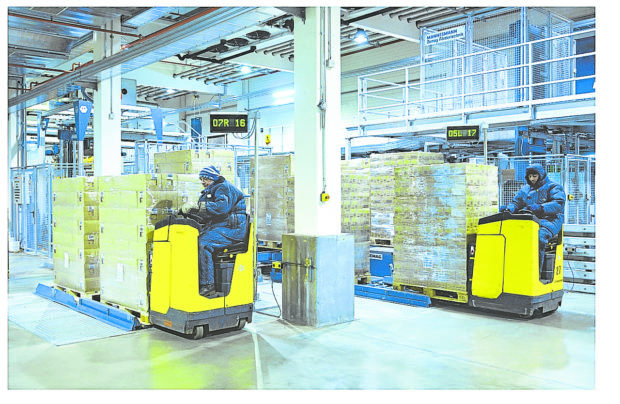
After more than a year of battling against COVID-19, the much-awaited ending to the pandemic that caused global turmoil is finally starting to unfold. However, just as how the world walked on thin ice prior to the discovery of the COVID-19 vaccines, its presence now is causing another global challenge, which took the phrase “walking on thin ice” quite literally.
‘Deep freeze’ requirement
The efficacy of vaccines is comparable to milk. Although both are needed to make our bodies stronger, they may also spoil when stored under inappropriate temperatures.
The reason for this phenomenon? At least within the context of COVID-19, the vaccines use the messenger RNA (mRNA) to turn a person’s cells into “factories” that create a specific coronavirus protein. This protein then responds as if there is a real coronavirus infection, allowing the immune system to fight the moment the body gets actually exposed to it. This vaccine technology is so new that not even the Food and Drug Administration has a prior record of approved mRNA vaccines pre-pandemic. However, the challenge lies in the mRNA themselves as they break down easily unless properly protected from the enzymes that “eat” them. Enter cold storage facilities.
More than just a freezer
In most cases, a cold storage facility is attached to the main building envelope and is usually covered in pre-fabricated insulated panels. They are usually made of six components: cold room doors, cold room panels, cold room shelves, cooling devices, dry-aging cabinets, and PVC strip curtains. Their cooling temperatures usually range between 15 degrees Celsius to minus 5 degrees C, whereas their freezing temperatures run from 0 degrees C to minus 40 degrees C. Depending on product volumes as well as the main building’s available ceiling height, the World Health Organization (WHO) recommends three types of room layouts for cold storage facilities.
For smaller spaces up to 100 m3, the simplest solution is to have walk-in cold storage with an adjustable shelving system. The center of these spaces can then be used as temporary storage of overspill products such as vaccine vials. For spaces with a larger area but insufficient ceiling height, a pallet standing can be installed. However, the huge dependency of this type of layout on mechanical handling equipment will require an insulated floor with adequate load capacity. This can be made from concrete with an insulating layer below the slab.
By far the most spacious and volume-efficient layout is the pallet racking. While it follows the same floor construction and refrigeration units as the pallet standing, it requires a counterbalanced electric lift truck to handle loads. Such equipment can be pedestrian-controlled, with either a stand- or sit-on model.
However, as if the extremely low temperatures of cold storage facilities required by the new COVID-19 vaccines aren’t challenging enough, extending one’s perspective from their manufacturing to storage imposes an even more challenging issue. How does one transport millions of tiny vaccine vials at vast kilometers, all the while keeping them at extremely low temperatures? The answer lies in a series of technologies known as the “cold chain.”
A system of cold technologies
Although the concept of the “cold chain” isn’t an entirely new idea, the immensely specific storage requirement of COVID-19 vaccines caused the recent resurgence of its popularity. After all, the Pfizer vaccine which is considered to be one of the leading contenders in the global vaccine race requires a storage temperature of a staggering minus 70 degrees Celsius. This temperature surpasses Antarctica’s winter, which is enough proof of how high-maintenance COVID-19 vaccines can be. It then becomes easy to see the need for an efficient “cold chain” that can maintain such extreme temperatures from the source to the end-users. Generally, the “cold chain” is a catch-all term that describes the infrastructure used to transport temperature-sensitive items such as vaccines from production facilities to the consumers. Dating back as early as the 1960s and the 1970s, its basic components include dry ice, fridges, ice boxes and temperature-monitoring technologies, among others.
How Philippines is keeping up
As one of the Southeast Asian countries greatly affected by the COVID-19 outbreak, the Philippines is set to buy 148 million doses in 2021 to vaccinate over half of its population. To further ramp up the country’s cold chain capacity, the government is also planning to collaborate with private industry groups owning fish and meat storage facilities. By the end of 2023, the local cold chain industry is expected to have estimated revenue of P20 billion or $416 million.
Importance of HVAC systems
Having a well-functioning HVAC (Heating, Ventilation, Air Conditioning) system is not only vital in cold storage facilities with critical items such as COVID-19 vaccines, but also for every other building type all year-round. Although one can’t easily spot the mechanical equipment as you enter the building, their effects can be easily gauged based on thermal comfort and effective airflow.
May the intricate nature of today’s cold storage facilities inspire us to reevaluate our perception of HVAC systems as more than mere machinery that can control how hot or cold an enclosed space will be, but as vital elements in building design that can greatly influence human health, holding solutions to one of the world’s most-awaited medical breakthroughs today.
The author (ianfulgar@FulgarArchitects.com) manages his own architectural firm helping local and international property developers get into unique and sensible planning and design specialties for real estate, hotels, condominiums, museums, commercial and mixed-use township developments with a pursuit for the meta-modern in the next Philippine architecture
Article and Photo originally posted by Inquirer last March 7, 2021 10:58pm and written by Ar. John Ian Lee Fulgar.












More Stories
Agriculture losses due to El Niño hit P4B
Megawide bags 5th Landers construction contract
FLI enters co-working space joint venture